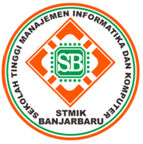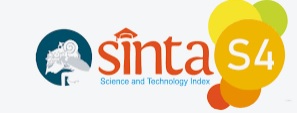Evaluasi Capability Level Infrastruktur Jaringan Teknologi Informasi PT XYZ Menggunakan COBIT 2019
Abstract
PT XYZ is a telecommunications industry company that is undergoing digital transformation. However, in the process, there are several problems that pose risks such as the use of end-of-sale/life devices, the complexity of data exchange, and the lack of centralization of network devices. When undergoing digital transformation, PT XYZ can use Control Objectives for Information and Technology (COBIT 2019) as a reference system in assessing governance. Research data comes from telecommunications companies in Indonesia to measure the level of information technology governance capability using COBIT 2019 in the align, plan, organize (APO) APO02, APO03, APO04, build, acquire, implement (BAI) BAI01, BAI02, BAI04, and delivery, service, support (DSS) DSS01, and DSS02 domains. The results of the study show that management objectives APO02, APO03, APO04, BAI01, BAI02, BAI04, DSS01, and DSS02 have a low level of capability with levels namely APO02 level 3, APO03 level 1, APO04 level 3, BAI01-BAI02, and BAI04 level 1, DSS01, and DSS02 level 5 with an average value of the overall management objective is level 3 (defined process).
Keywords: COBIT 2019 Framework; IT Governance; Capability Level; Telecommunication Industry Â
Abstrak
PT XYZ merupakan perusahaan industri telekomunikasi yang sedang melakukan transformasi digital. Namun, dalam proses tersebut terdapat beberapa masalah yang menimbulkan risiko seperti penggunaan perangkat end-of-sale/life, kompleksitas pertukaran data, dan kurangnya sentralisasi perangkat jaringan. Saat melakukan transformasi digital, PT XYZ dapat menggunakan Control Objective for Information and Technology (COBIT 2019) sebagai sistem acuan dalam menilai tata kelola. Data penelitian bersumber dari perusahaan telekomunikasi di Indonesia untuk mengukur tingkat kapabilitas tata kelola teknologi informasi menggunakan COBIT 2019 pada domain align, plan, organize (APO) APO02, APO03, APO04, build, acquire, implement (BAI) BAI01, BAI02, BAI04, dan delivery, service, support (DSS) DSS01, dan DSS02. Hasil penelitian menunjukkan management objektif APO02, APO03, APO04, BAI01, BAI02, BAI04, DSS01, dan DSS02 memiliki tingkat kapabilitas rendah dengan level yaitu APO02 level 3, APO03 level 1, APO04 level 3, BAI01-BAI02, dan BAI04 level 1, DSS01, dan DSS02 level 5 dengan nilai rata-rata keseluruhan management objective adalah level 3 (defined process).
Kata kunci: COBIT 2019 Framework; IT Governance; Capability Level; Telecommunication Industry Â
References
L. D. Oktaviana, P. Pribadi, & Sabrinawati, M. “Evaluasi IT Governance Menggunakan Framework COBIT 5 (Studi Kasus : PT. XYZ)â€, Jurnal Pro Bisnis, Vol. 12, No 1, pp. 56-68, 2019. DOI https://doi.org/10.35671/probisnis.v12i1.812.
M. Alenezi, , K. Almustafa, & Meerja, K. A, “Cloud based SDN and NFV architectures for IoT infrastructureâ€, Egyptian Informatics Journal, Vol. 20, No. 1, pp. 1-10, 2019. DOI https://doi.org/10.1016/j.eij.2018.03.004.
J.R. Sánchez, D. Delgado-Hernández, E. Fernández-Medina, & M. Piattini-Velthuis, “Comparative Analysis of IT Governance Frameworks: A Review of Five Frameworksâ€, Computers & Security, Vol. 68, No. 1, pp. 89-103, 2017.
F. Anwar, M. Ilyas, & Y. Zainuddin, “COBIT Framework Implementation for IT Governance, Risk Management, and Compliance: A Systematic Literature Reviewâ€, Journal of Information Systems Engineering and Business Intelligence, Vol. 4, No. 1, pp. 7-20, 2018.
Isaca, OBIT 2019 Framework: Introduction and Methodology. New York: Information Systems Audit and Control Association, 2018.
L.G. Damha, A.H. Trevisan, D.G. Costa, & J.M.H. Costa, “How Are End-of-Life Strategies Adopted in Product-Service Systems? A Systematic Review of General Cases and Cases of Medical Devices Industryâ€, Proceedings of the International Conference on Engineering Design ICED, Texas, 3061–3070, Augustus 2019. DOI https://doi.org/10.1017/dsi.2019.313.
D. Siswanto, “Development of Information and Communication Technology Infrastructure in School using an Approach of the Network Development Life Cycle Methodâ€, Journal of Physics: Conference Series, Vol. 1908, No. 1, pp. 1-8, 2021. DOI https://doi.org/10.1088/1742-6596/1908/1/012026.
D. Raj, "Performance Evaluation of QoS in Marine Vehicle to Infrastructure (V2I) Network," 2020 International Conference on COMmunication Systems & NETworkS (COMSNETS), Bengaluru, India, 2020, pp. 876-878, doi: 10.1109/COMSNETS48256.2020.9027424.
C. Lumingkewas, J.Y. Mambu, , A.K. Wahyudi, “Identification of IT Governance Capability Level of COBIT 2019 at The KOMINFO City of Bitung, North Sulawesiâ€, Jurnal TeIKa, Vol. 13, No. 1, pp. 1-15, 2019. DOI https://doi.org/10.36342/teika.v13i01.3064.
F. Wahdah, B. Soewito, “Manajemen Risiko Aplikasi Keuangan Pada Perusahaan ABC Melalui Kombinasi NIST SP 800-30, COBIT, PMBOK, dan ISO 31000â€, Jurnal Informatika dan Komputer, Vol. 5, No. 2, pp. 78 – 83, 2022. DOI https://doi.org/10.33387/jiko.v5i2.4369.
F. Fahreza, & M. Rifqi, “Nagios Core Optimization By Utilizing Telegram as Notification of Disturbanceâ€, Journal of Applied Science, Engineering, Technology, and Education, Vol. 2, No. 2, pp. 121 – 135, 2020. DOI https://doi.org/10.35877/454ri.asci2259.
J.N. Siahaan, “Evaluasi Tata Kelola Sistem Informasi Dengan Menggunakan Framework COBIT 5 Pada Group XYZ†Tesis, Prodi Magister Informatika, Universitas Bina Nusantara, Jakarta, 2019.
S.F. Bayastura, S. Krisdina, & A.P. Widodo, “Analisis Tata Kelola Teknologi Informasi Menggunakan Framework COBIT 2019 pada PT. XYZâ€, JIKO: Jurnal Informatika dan Komputer, Vol. 4, No. 1, pp 68- 75, 2021.
S. A. Wulandari, A. P. Dewi, M. Rizki Pohan, D. I. Sensuse, M. Mishbah, and Syamsudin, “Risk Assessment and Recommendation Strategy Based on COBIT 5 for Risk: Case study sikn Jikn Helpdesk Serviceâ€, Procedia Comput Sci, Vol. 161, pp. 168–177, 2019, DOI https://doi.org10.1016/j.procs.2019.11.112.
M. M. Rio Septian Hardinata, Wirda Fitriani, Cahyo Pramono and A. K. Husni Muharam Ritonga, Leni Marlina, Suheri, “Audit Tata Kelola Teknologi Informasi Menggunakan Cobit 5 (Studi Kasus: Universitas Pembangunan Panca Budi Medan)â€, Jurnal Teknik dan Informatika, Vol. 6, No. 1, pp. 42–45, 2019.
D. Fernando, Z. Muttaqin, & D. Karyaningsih, “Audit Sistem Informasi Pengadaan Sekolah (SipLah) Menggunakan Framework COBIT 5.0. Jurnal Sisfokom (Sistem Informasi dan Komputer)â€, Jurnal Sisfokom: Sistem Informasi dan Komputer, Vol. 10, No. 2), pp. 291-297, 2021.
C. Rahmansah, “It Governance Sistem Informasi Akademik dengan Framework Cobit® 4.1 (Studi Kasus di SMK Negeri 1 Kota Tangerang Selatan)â€, Teknologi: Jurnal Ilmiah dan Teknologi, Vol. 2, No. 1, pp. 15-19, 2020.
How To Cite This :
Refbacks
- There are currently no refbacks.










